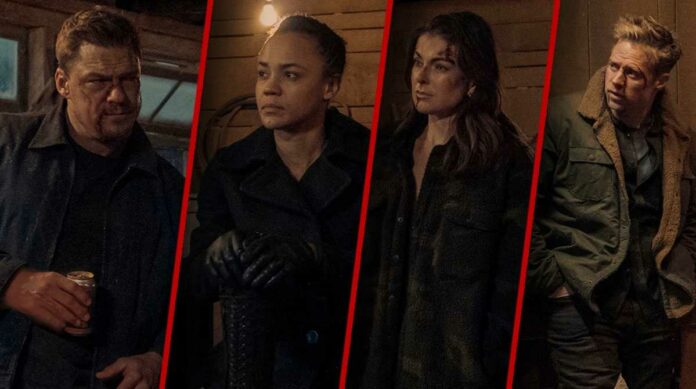One of the defining features of Lee Child’s Reacher novel series is its seemingly disconnected and self-contained nature, as a significant number of the titular protagonist’s adventures take him through totally different situations and experiences without bothering readers about continuity. The makers of Amazon Prime’s TV series of the same name adhered to this principle, which is how, after adapting Child’s first entry of the series, Killing Floor, in the first season, they jumped directly to the eleventh book of the series, Bad Luck and Troubles, to build upon the second one. As an introductory chapter, the first season of Reacher revolved around the exploitation of small-town resources by a greedy conglomerate and was relatively low-key in stakes, with a personal angle introduced through the death of Jack’s brother, Joe Reacher. In comparison, the second season aimed bigger, and along with a national-scale terrorism threat acting as the focal point of the narrative in the form of the Littlewing conspiracy, it entailed a heinous murder mystery, bringing Reacher to confront his most personal crisis yet.
The Littlewing conspiracy is shaped through the actions of two major antagonists in this season: the elusive, tactical terrorist weapon broker, known by his acronym A.M., and the ruthless, sadistic chief of security of New Age tech, Shane Langston. Now that the season has come to an end, we will go through the entire conspiracy in chronological order, highlighting the respective roles of the villainous duo and assessing how it fares next to the source material.
Spoilers Ahead
What Role Did Langston Play In The Conspiracy?
Even before either Langston or A.M. came into the picture, as an aerospace company, New Age Technology was handed their most lucrative defense contract by DOD, known as Project Littlewing. Originally, Littlewing was designed as anti-missile software that could protect commercial airlines from possible threats, but New Age was able to tweak it enough to turn it into an enhancement that allowed missiles to bypass any form of radio-transmit-oriented anti-missile countermeasures. This means, that when hardwired with a surface-to-air missile, Littlewing will ensure that a set airborne target is hit every time without exception, making it unstoppable in every way.
This is where New Age’s chief of security, Langston, entered the scene, along with his bad batch of NYPD 13th precinct colleagues, each being as corrupt and morally bankrupt as him, whom he had strategically put in New Age’s security team. It is later revealed that Langston and his colleagues were under investigation and took early retirement to avoid getting nabbed. Anyway, Langston took one of the chief engineers of the company under his wing to deliberately flag a significant bunch of Littlewing software chips as defective. In this way, a number of functional chips were easily outsourced without raising suspicion, which Langston had planned to sell for a whopping sixty-five million dollars to the terrorist weapon broker A.M. and be set for life.
However, New Age’s director of operations, Marlo Burns, had her suspicions about Langston and the entire security unit, and after the repeated instances of Littlewing chip malfunctions, she hired Tony Swan, a member of Reacher’s unit of special investigators who was working as PI after retirement, to investigate the situation. Swan’s military background made it easy for him to get enlisted in New Age’s security team, and eventually he learned about Langston’s crooked scheme. Given the seriousness of the situation, before revealing his findings to Marlo, Swan decided to share the details with his 110th unit comrades, Orozco, Sanchez, and Franz, to seek their help in foiling the plan. Langston eventually learned about Swan’s investigation and offered him a portion of the profit in hopes of ensuring his allegiance. However, Swan proved to be a straight arrow like the rest of his 110th comrades and spat on the proposal, leading to Langston eliminating him from the scene. The cunning and diabolical nature of Langston comes to light after learning how he maligned Swan’s integrity by using his body parts to authenticate shady dealings under his name after his death—a move that will create a rift between Reacher and the rest of his team regarding Swan’s loyalty to his team.
Langston will eventually learn about the 110th unit and systematically hunt down Orozco, Sanchez, and Franz. However, his luck will finally run out after Reacher and the rest of the unit learn about his crime, and eventually, he will meet his befitting end.
How Did A.M. Fare As An Antagonist?
While the introduction made it seem that A.M. was going to play the role of Big Bad in the second season of Reacher, with Langston being his lackey, in reality, A.M. had a far less significant impact on the narrative compared to him. In the books, he is presented as an antithesis and mirror image of Reacher, operating undetected like a ghost. There was a sense of mystery and enigma surrounding him, which made his character interesting and less of a one-toned terrorist cliché. The series tried to make him more intimidating by letting him go on a rather unnecessary killing spree, leaving him with little to no personality. In their effort to make the character menacing, they instead made A.M. clumsy and extremely stereotyped.
Throughout the second season, A.M. simply went on his way to hide his identity, secure his shipment of Littlewing, and ultimately have a massive impact on Reacher’s side of the story. He wasn’t involved with the 110th unit killings; the only time he interacted with Reacher and co. was in the finale, where he met a lackluster, bogus end by getting unceremoniously killed. The serious buildup, which was reserved for A.M., needed to be given to Robert Patrick’s Langston instead, who was the only silver lining in the villain department in the second season.

